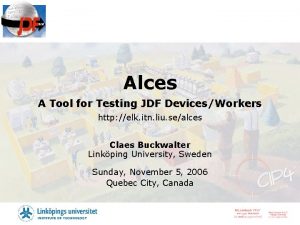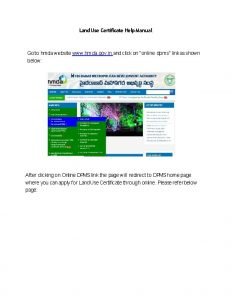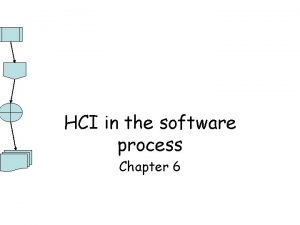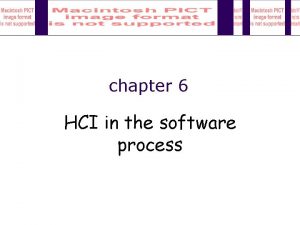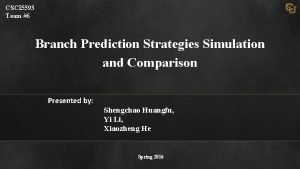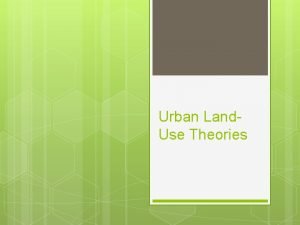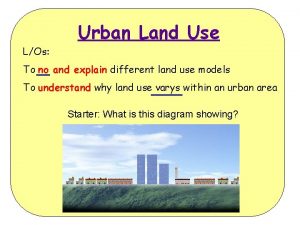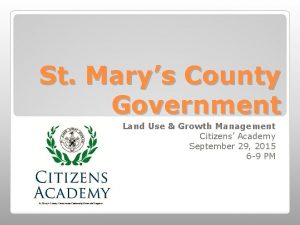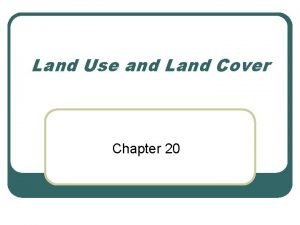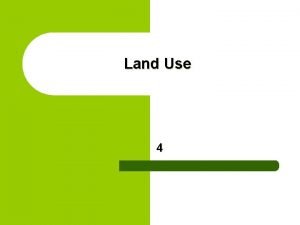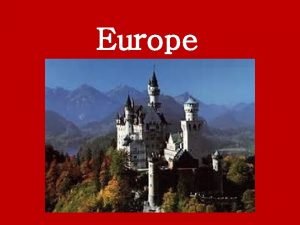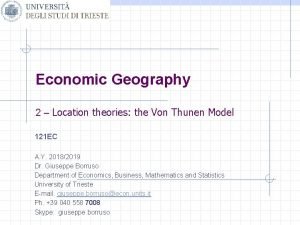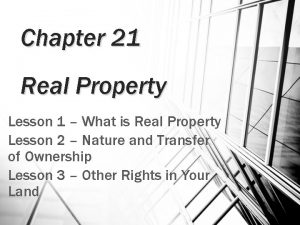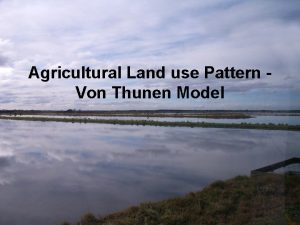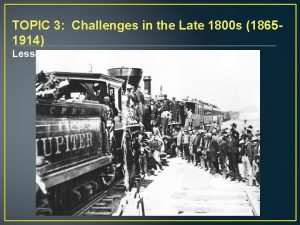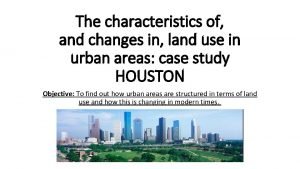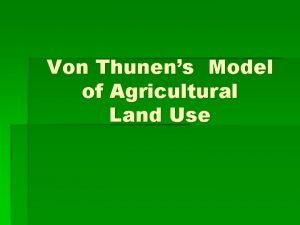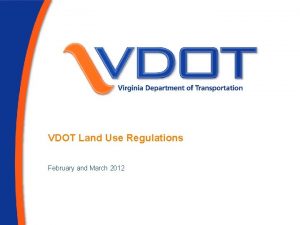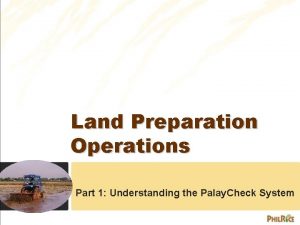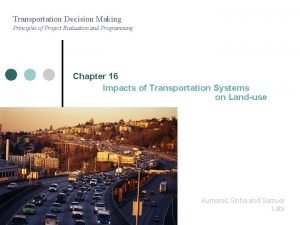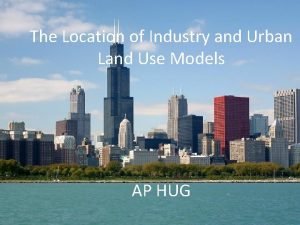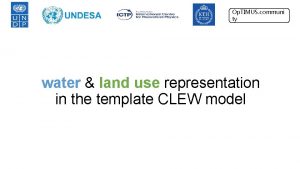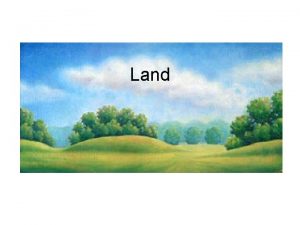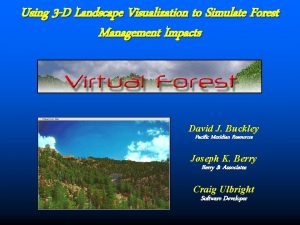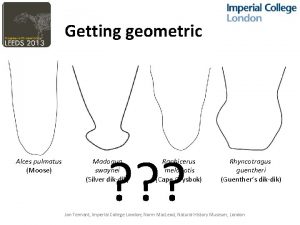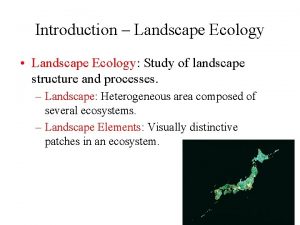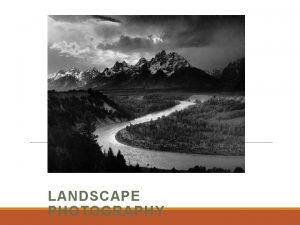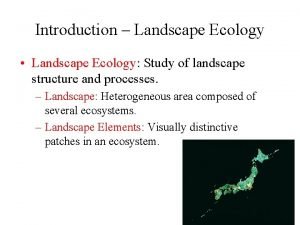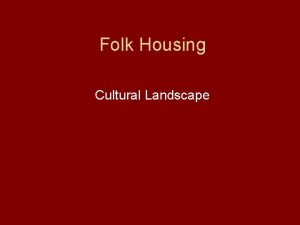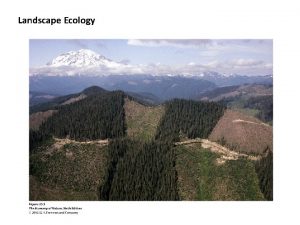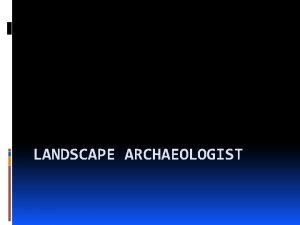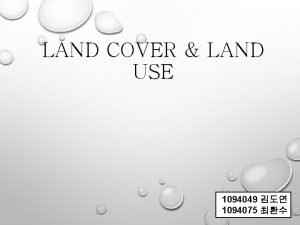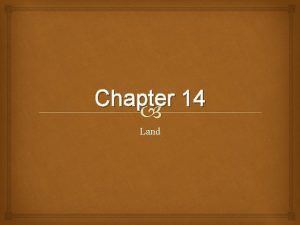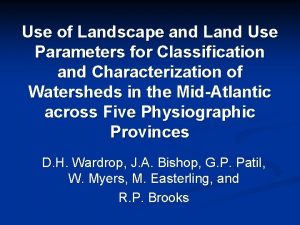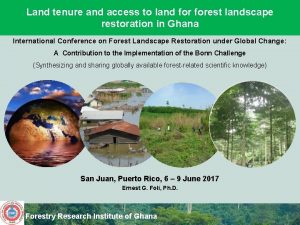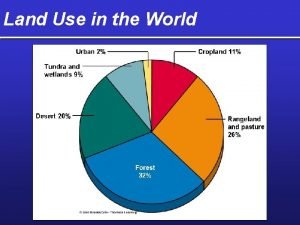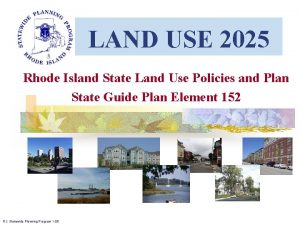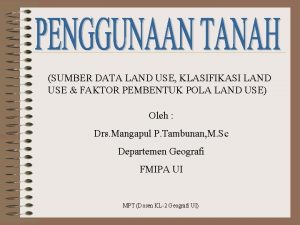Using Alces Online to Simulate Landscape Land Use































- Slides: 31

Using Alces Online to Simulate Landscape, Land Use, and Wildlife Dynamics in New Zealand Presentation to Landcare Research by Brad Stelfox of Alces Group

Thanks to Cecilia Arienti and Electra Kalaugher, Landcare Research 2

3

The Alces Group 4

Where have we come from? What is our current condition? Where might we want to go? Landscape Flight Simulator What are the key opportunities What are the key risks and constraints Which land use trajectories are optimal?

Where has ALCES been Used • British Columbia • Alberta • Saskatchewan • Manitoba • Northwest Territories • Ontario • Paraguay • Western Australia • India (Akole Region) • United States (Kenai, Alaska)

How can Alces assist Landcare Research 1. Analyze and Map temporal and spatial changes in landscapes, watershed metrics, and wildlife habitat and populations 2. Simulate changes in water use, quantity and quality 3. Explore temporal and spatial changes in plant communities from climate change, forestry, deforestation, reforestation 4. Explore consequences of land use trajectories on Social, Economic, and Environmental Indicators (triple bottom line) 5. Identify spatial distribution of risk (flood, drought, climate change) 6. Quantify alternative management and control strategies on populations and habitat of invasive species and their interactions with other species 7

Cloud-based Geographic Information System (GIS) Dynamic Landscape & Landuse Simulator

Land Uses Tracked in Alces Online, Ninti One, and ILC 9

Natural Disturbances, Ecological Processes, and Monitoring Data Climate and Climate Change Carbon Pool Dynamics Hydrological Cycle Wildlife Habitat Natural Disturbance Regimes Wildlife Populations Plant Community Dynamics Landscape Metrics

Home Back Module Architecture of ALCES Control Switches For Projects where detailed and mechanistic sectoral models have already been constructed, ALCES can be informed (receive input) from the output from these models 1. 4. 2

Home Back Examples of Landscape Types (LTs) Control Switches Landscape Types 1 2 3 4 5 6 7 8 9 10 11 12 13 14 15 16 17 18 19 20 Shrublands 4. 3


Home Back Commodities 1 2 3 4 5 6 7 8 9 10 11 12 Commodities Tracked in ALCES Control Switches Production or Harvest Types • Hardwood • Softwood • Oil • Gas • Coal • Electricity • Gold • Iron Ore • Diamonds • Pearls • Cereal Crop • Oilseed Crop • Forage Crop • Cattle • Sheep • Pigs • Tourist Activity Day • Person Existence Day 4. 7


Softwood Biomass Hardwood Biomass m 3/ha or Tonne/ha Down Woody Material Biomass Snag Biomass Herbaceous Biomass 0 20 40 60 80 100 120 140 160 180 Years since Disturbance (Fire, Logging, Insect Outbreaks) 200

How can “Systems Thinking” Assist in Sustainable Resource Managem

Moving from Silos to Integrated Regional Planning Integrated Land Use and Landscape Planning T o u r i s m an d R e c r e at i o n F o r e st r y En e r g y T r an s p o r t M ining A g r ic ult ur e R e s i d e n t i al A b o r i g i n al L an d U s e 18 Alces Online, Ninti One, and ILC

Enabling a “Systems” Discussion on Dynamics of Landscapes and Land Use Aboriginal Communities Transportation Livestock Sector Tourism /Recreation Sector Environmental Community Local Government Authorities Crop Sector Mining Sector Water Managers State Government Fishing Community Forest Sector 19

Example of a Systems Approach to Interface of Urban Design, Recreation and EGS Shire Fiscal Sustainability Flood & Drought Frequency and Magnitude Water Treatment Costs Water Quality & Quantity Building Cooling Costs Key Policy Driver GHG Emissions Body Mass Index Intermediate Factor Infrastructure Construction & Maint. Costs Area of CBD, Mixed Use, Mature Neighbourhoods and Suburbia Loss of Natural Landscapes Water & Nutrient Runoff Health Care Costs Loss of Agricultural Lands Food Security Key Indicator Calorie Output Urban Growth Strategy Biodiversity Carbon Pool Dynamics Walkability Vehicle Travel Distance Fuel Consumption GHG Emissions Public Transportation ($ Const/Maint) Private Transportation ($ Const/Maint)

Home Back Forest Sector Impact Diagram Economic Benefits Fraction of Forest that is Protected -Employment -Royalties Total Forest Landbase Merchantable Landbase Subjective Deletions Key Driver Intermediate Factor Natural Indicator Economic Indicator -Riparian Buffers -Steep Slopes -Residual Green Trees -Adjacency Delay Landbase Metrics -Age Structure -Forest Core Area -Physiognomy -Linear Features -Connectivity Control Switches Wildfire Insects Biotic Carbon Access AAC Best Management Practices -Harvest & Regeneration Strategy -Silviculture -Rotation Age -Crossings -Road Reclamation -Old Growth Objectives -haul roads -inblock roads Wildlife Popns Habitat Nutrients -Sediment -Organics -Nitrogen -Phosphorus Water Quality And Quantity 8. 1. 1

Exploring Alternative Futures for Landscapes Comparing “What-If” Scenarios Mid 1800’s 2017 • • • Ecosystem Structure Narrative C Water Quality/Quantity Economic Performance Narrative B Infrastructural Sustainability Wildlife Populations Food and Energy Security Narrative A Climate Change Urban Design 2065 Human Demography

An Integrated Approach to Resource Management Housing Age Main Menu Water Supply Water Quality Income Connectivity Number Health Groundwater Natural Plants Ethnicity Temperat ure Education Rainfall Water Air Quality Wildlife Soils Climate Change Tourism Recreation Oil and Gas Residential People Crops Livestock Fishing Aqua. Culture Forest Fiber Mine Ore Mineral Oil / Gas Elevation Slope Asoect Revenue Infrastructure Costs Flow-On Supply Chain Employment GRP Royalties

Integrating Spatial Data into a Dynamic Landscape Engine S-Map LINZ New Zealand Geodata LRIS

The Spatial Grid Foundation of ALCES Online Within each cell, AO computes for each time step: • Landscape composition • How many m 2 of hardwood forest, crops, … • Meteorology • Precipitation (annual, monthly) • Temperature (annual, monthly) • Water Yield and Flow • Footprint Composition • How many km or m 2 of tracks, campsites, roads, wellsites, …. • Surface Water • How many m 2 of ponds, lakes, reservoirs, …. • How many km of streams, rivers, …. • People • How many are in towns, acreages, farms, …. • Livestock • How many sheep, cattle, pigs, chickens, horses, … • Commodity Production • Tourism Activity Days, Crops, livestock, hydrocarbons, minerals, wood, ….

Using ALCES Online • A Computer • Access to the Internet • A Browser • Applications?

General Description of ALCES Online • Alces Online is a cloud-based web-delivered GIS for examining cumulative effects of land use, natural disturbance regimes and storing environmental, social and economic data. • It is designed to run on modern browsers and takes advantage of current technologies including: Web. GL, Javascript, Python and the Django MVC development framework. • The core of the application is a geo database with many billions of data points that are used to perform analyses and calculations that are delivered to the client with interactive maps, charts, scatterplots, and tables. • Maps and charts are managed via REST queries from the client to the geo database and GIS server.

Outputs from Alces Online

Scatterplot Page: 3 -D scatterplots

Scatterplot Page: Building a Magnitude Map

Statistics in Alces Online: R Stat Sandbox
 Cip4 alces
Cip4 alces Apply for land use certificate hmda
Apply for land use certificate hmda Continuity equation
Continuity equation It simulate or animate some features of intended system
It simulate or animate some features of intended system Hci chapter 6
Hci chapter 6 Signal simulator tutorial
Signal simulator tutorial Fluke 789 hart function
Fluke 789 hart function Simulate
Simulate An area of land largely enclosed by higher land
An area of land largely enclosed by higher land A pointed piece of land extending into the sea
A pointed piece of land extending into the sea Cetacean
Cetacean Burgess model of land use
Burgess model of land use Model urban land use
Model urban land use St. marys county land use and zoning lawyer
St. marys county land use and zoning lawyer Land use planning '' lecture notes
Land use planning '' lecture notes Usgs land use classification
Usgs land use classification Types of land use
Types of land use Mixed land use ap human geography definition
Mixed land use ap human geography definition Rent theory
Rent theory Irrevocable rights to some limited use of another's land
Irrevocable rights to some limited use of another's land Von thunen agricultural land use model
Von thunen agricultural land use model Which use of western land negatively affected everyone?
Which use of western land negatively affected everyone? Characteristics of land use in urban areas
Characteristics of land use in urban areas Land use planning '' lecture notes
Land use planning '' lecture notes Flood hazard area land use management guidelines
Flood hazard area land use management guidelines Agricultural land use model von thunen
Agricultural land use model von thunen Vdot ssar
Vdot ssar Land use planning lecture notes
Land use planning lecture notes Characteristics of a well-prepared upland field
Characteristics of a well-prepared upland field Land use transportation
Land use transportation Multiple nuclei model
Multiple nuclei model թիմուս
թիմուս
